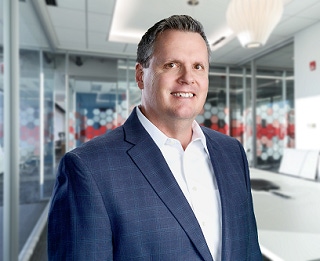While the rationale for modernizing IT is often apparent, sometimes the messaging and positioning on the part of the IT group is just as important.

IT leaders often struggle to balance cloud-fueled business demands for more innovation and speed with enterprise realities like security, compliance, and cost-cutting. While the need for IT modernization in order to manage such complex tradeoffs seems intuitive to the CIO, getting the rest of the organization on board can be a hard sell.
One recent survey highlighted that IT modernization can reduce annual operating costs by 13% and even boost top-line revenues. Additionally, as cybersecurity creates both headaches and headlines for the C-suite (as one CTO told me, “Security is now my nights and weekends job), having a strong IT infrastructure in place enables organizations to better detect, mitigate and reduce security threats. So, the motivation and proof points are there. But as with any evidence-based idea, it comes down to how you sell it.
Whether you�’re making the case for an entirely new solution or refreshing your data center, below are seven principles to follow for marketing modernization to the rest of your business:
Stick to a cadence. Whether it is quarterly presentations, recorded webinars, project update emails, or town hall meetings, it’s important to communicate frequently across various platforms – but not on an ad hoc basis. Stay predictable and frequent in order to make your messages stick. Your company needs to understand the reason why a new IT infrastructure needs to be implemented and how doing so will improve productivity at multiple levels.
Speak like you are the business. It goes without saying to speak in terms of business outcomes when discussing IT initiatives. Additionally, avoid the phrase, “IT and the business.”After all, oftentimes IT is the business these days. Also, speak in terms of a technology’s potential to drive specific business metrics related to growth, savings, or customer retention. Even though they have merit, avoid squishy business benefits like labor cost avoidance, or flexibility and agility, if you want to avoid eye rolls.
Educate on the possibilities. IT is often called upon to fix things that are broken, and there’s enormous value in that work. But don’t let that “things are always broken” seep into your messaging to the rest of the business. Allow your stakeholders to experience and learn about the latest innovations – not things that may be available in 18 months, but things you might be able to do by next quarter. Host in-person technology innovation days during lunch hours as a way to demonstrate the possibilities, including carving out ample time during those sessions to listen.
Don’t blow your own horn too much. Discuss what it means to utilize productive partnerships between IT and the business. If you brag too much about the great things IT is implementing, your audience may begin to tune you out and ignore the shared goal. Messaging is key; without it, no one will understand how a stronger IT environment will affect their daily work.
Own up fast when things go wrong. When a challenge with a project or system arises, communicate quickly and transparently to the company and its executives. Never make excuses. Sometimes the best internal marketing is how you handle a negative situation. Your colleagues will appreciate that you alerted them about the issue and that you handled it properly.
Include priorities and drivers in your messaging. It’s common for business stakeholders to complain about any shared service, especially IT, if there’s a perceived lack of speed or responsiveness. In many cases, that misperception can be traced back to a lack of visibility into the competing priorities faced by the IT function.Your priorities and the rationales for making tradeoffs don’t have to be the headline, but they should be included.
Don’t forget to market to your own team. Sometimes, CIOs solely focus on building rapport with teams outside of IT, and they neglect their own team members. Make sure what you communicate to the rest of the world is first engaging your own team. Allow teammates to be part of crafting, testing and refining the messages.
Legacy infrastructure that’s approaching end of life is not only a burden for IT departments, it can hinder business productivity, expose a company to more security risks, and ultimately erode competitive advantage. But while the rationale for modernizing IT is often apparent, sometimes the messaging and positioning is just as important. By following the seven tips mentioned above, IT executives will be better positioned to successfully convey the benefits of IT modernization to the rest of the business and be viewed as an even more valuable part of the organization.
Tom Pohlmann joined AHEAD in 2017 as CMO responsible for brand, messaging, demand generation, events, and media relations. Highly regarded in the technology sector as an innovator and thought leader, Tom excels at guiding businesses through transformations in their strategy and go-to-market efforts. He has 25 years of experience, including leadership roles at data and analytics solutions providers, as well as 14 years at Forrester Research, where he ran the IT research and advisory business unit, plus corporate strategy and marketing.
About the Author(s)
You May Also Like





